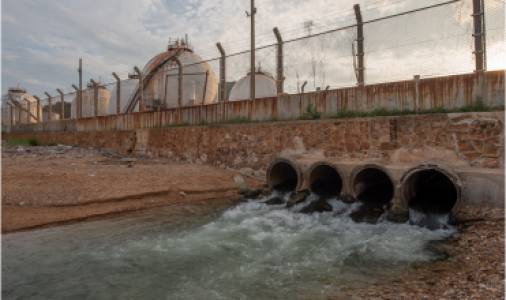Description
Wastewater: A Comprehensive Overview & Solutions
Wastewater, also known as sewage or effluent, is any water that has been contaminated by human use. This includes water from households, industries, and stormwater runoff. It's a complex mixture containing a wide range of pollutants that pose significant environmental and public health risks if not properly managed.
Composition of Wastewater:
Wastewater's composition varies greatly depending on its source. However, common components include:
- Organic Matter: This includes human waste, food scraps, detergents, and other biodegradable materials. These contribute to oxygen depletion in receiving waters (e.g., rivers, lakes, oceans).
- Inorganic Matter: This encompasses dissolved salts, minerals, and heavy metals. These can be toxic to aquatic life and accumulate in the environment.
- Pathogens: Bacteria, viruses, and parasites are significant health concerns, potentially causing waterborne diseases if untreated wastewater enters drinking water sources or recreational areas.
- Nutrients: Nitrogen and phosphorus from fertilizers and detergents contribute to eutrophication, leading to algal blooms and oxygen depletion.
- Pharmaceuticals and Personal Care Products (PPCPs): These emerging contaminants are increasingly found in wastewater and their long-term environmental impacts are still being investigated.
- Industrial Pollutants: Manufacturing processes can introduce a wide range of specific pollutants depending on the industry, including heavy metals, solvents, and oils.
Challenges Posed by Wastewater:
Untreated or inadequately treated wastewater poses several significant challenges:
- Water Pollution: Contamination of water bodies leads to degradation of water quality, impacting aquatic ecosystems and potentially rendering water unsuitable for human use.
- Public Health Risks: Exposure to pathogens can lead to various waterborne diseases.
- Environmental Degradation: Eutrophication, habitat destruction, and soil contamination are potential consequences.
- Economic Impacts: Water pollution can negatively impact fisheries, tourism, and other industries that rely on clean water resources.
Wastewater Treatment Solutions:
Various treatment processes are employed to remove pollutants from wastewater before it's safely discharged or reused. These processes can include:
- Primary Treatment: Physical processes like screening and sedimentation remove large solids and suspended particles.
- Secondary Treatment: Biological processes utilize microorganisms to break down organic matter. This commonly involves activated sludge processes or trickling filters.
- Tertiary Treatment: Advanced treatment methods, such as filtration, disinfection (chlorination, UV, ozonation), and nutrient removal (nitrification/denitrification), are employed to further improve effluent quality.
- Advanced Oxidation Processes (AOPs): Used to remove recalcitrant pollutants like PPCPs and emerging contaminants.
- Membrane Bioreactors (MBRs): Combine biological treatment with membrane filtration for highly efficient treatment.
- Wastewater Reuse and Reclamation: Treated wastewater can be reused for irrigation, industrial processes, or even potable water after further treatment.
Conclusion:
Effective wastewater management is crucial for protecting public health and the environment. Understanding the composition, challenges, and treatment solutions associated with wastewater is essential for developing sustainable water management strategies and ensuring the availability of clean water resources for future generations. Further research and technological advancements are continuously being explored to improve the efficiency and effectiveness of wastewater treatment and reuse.
